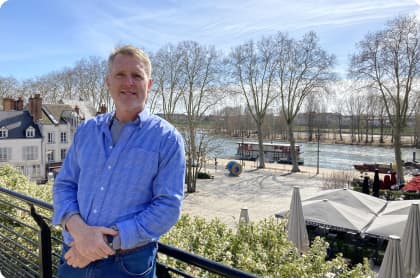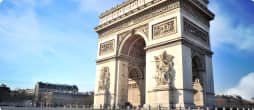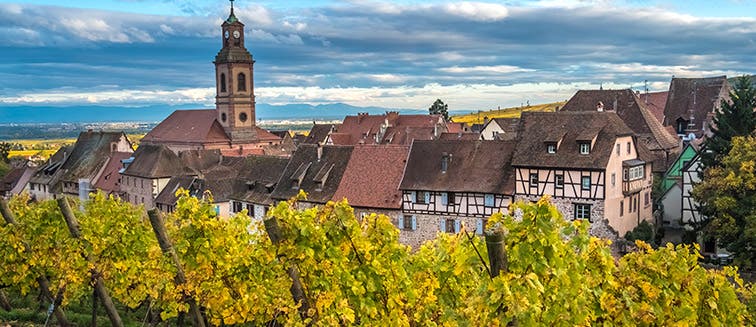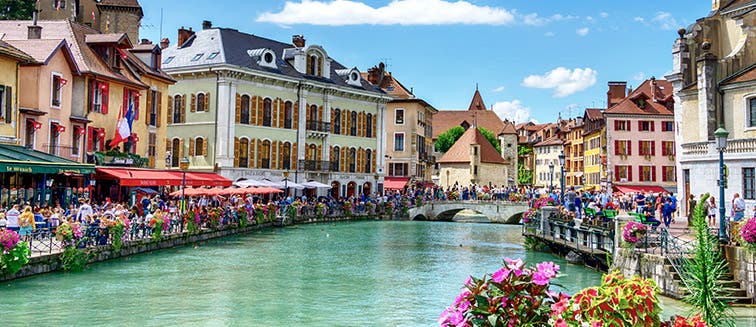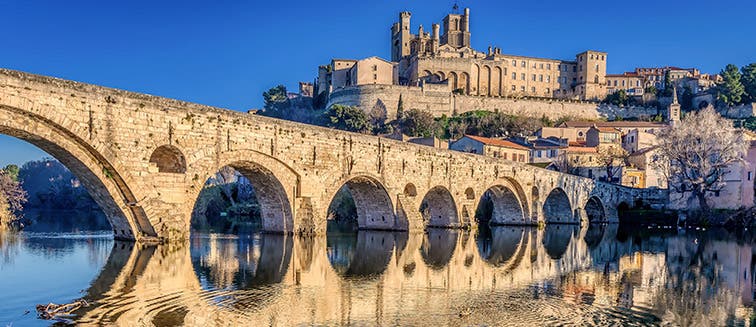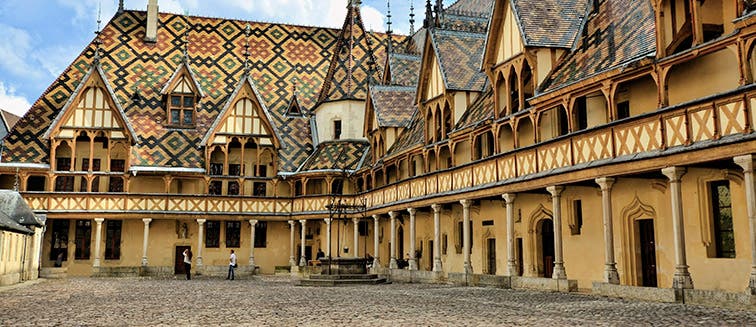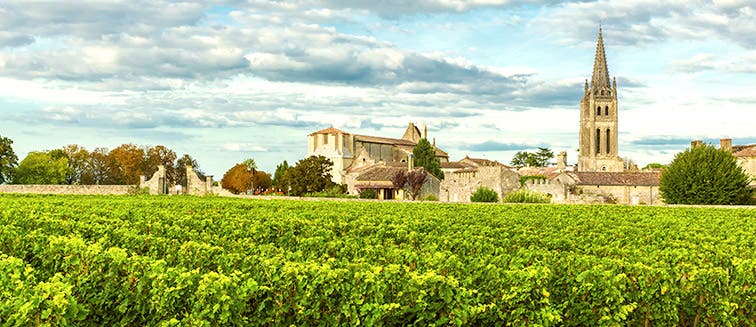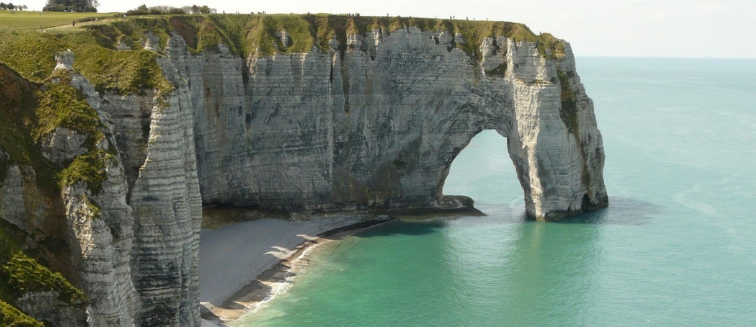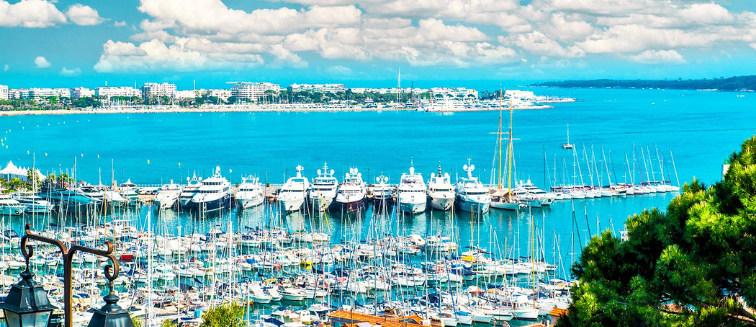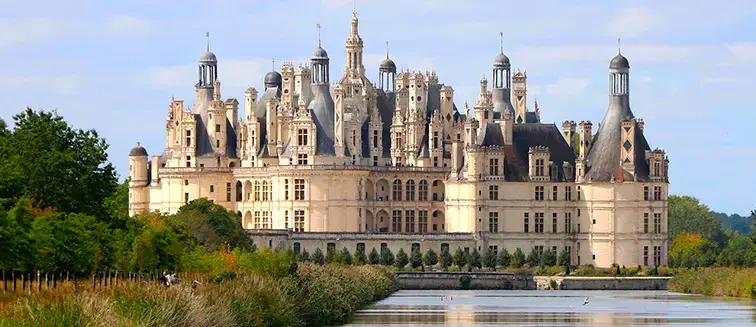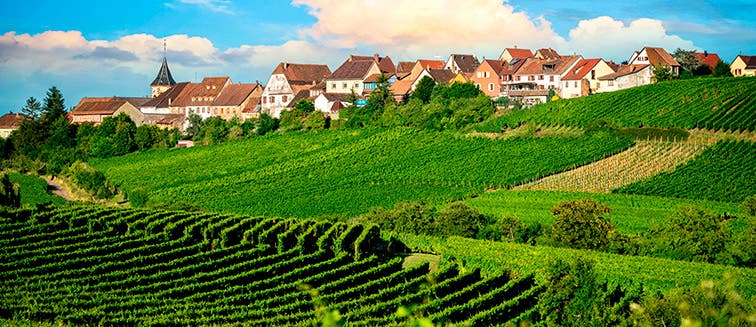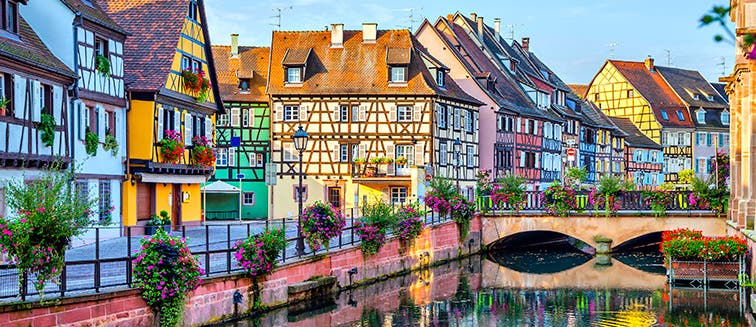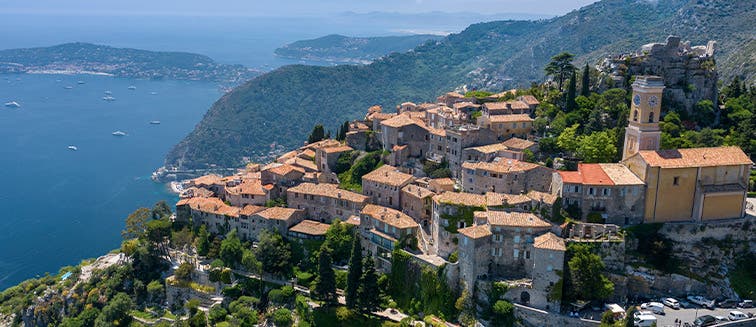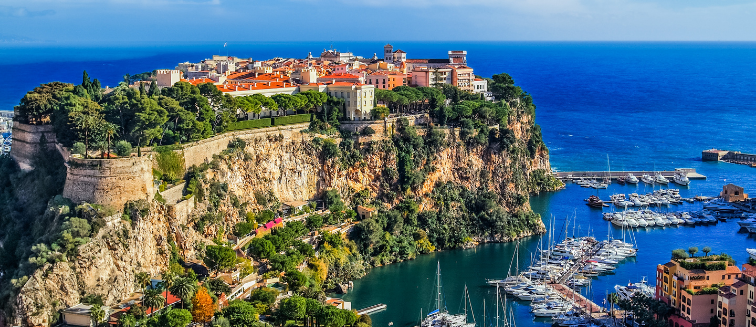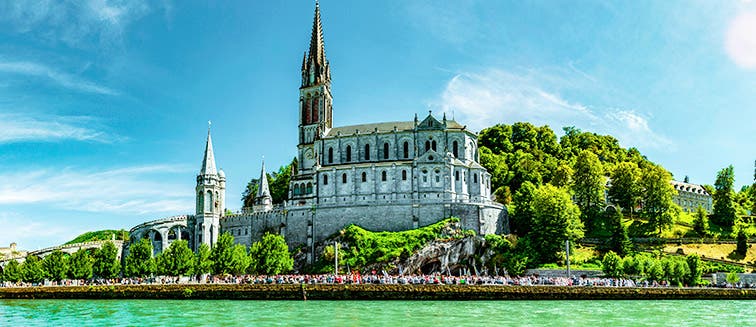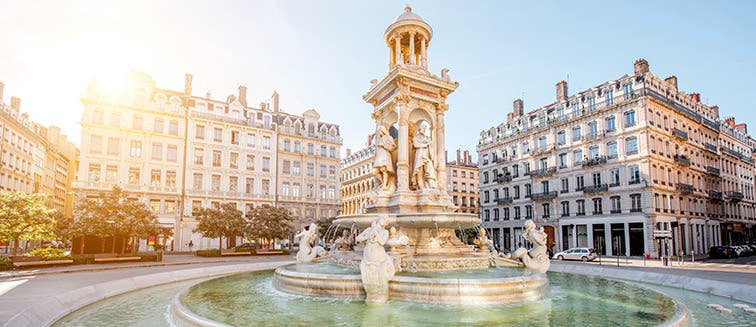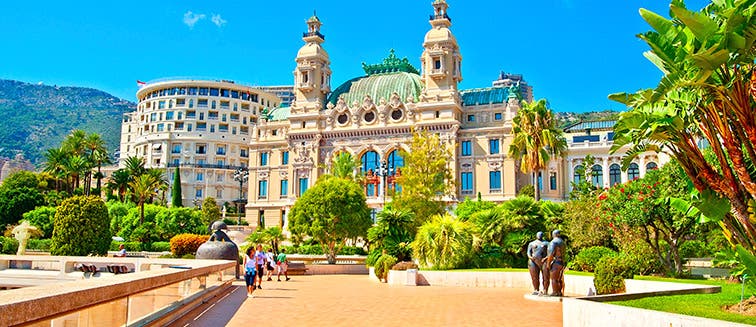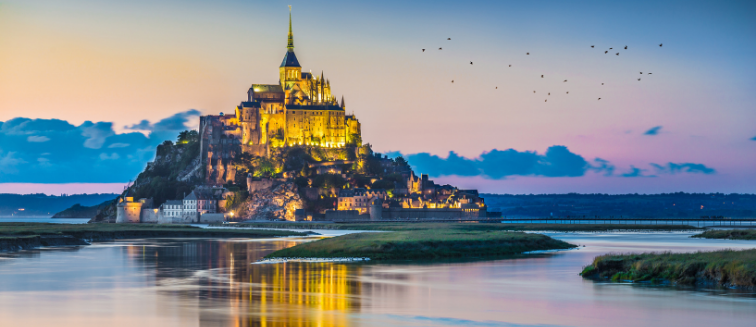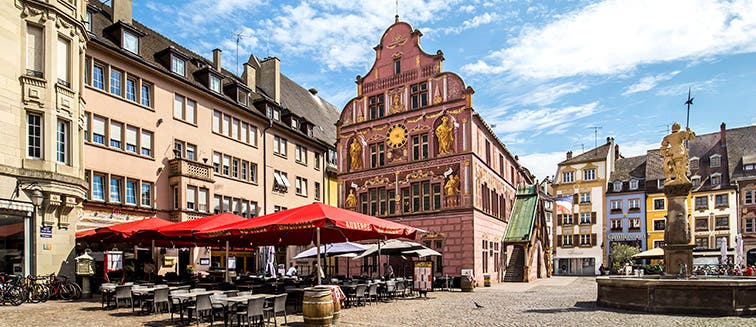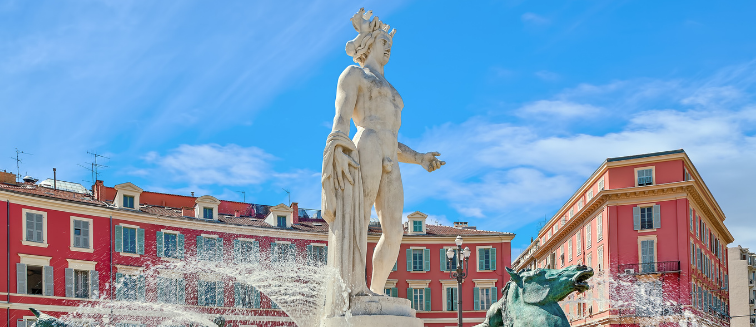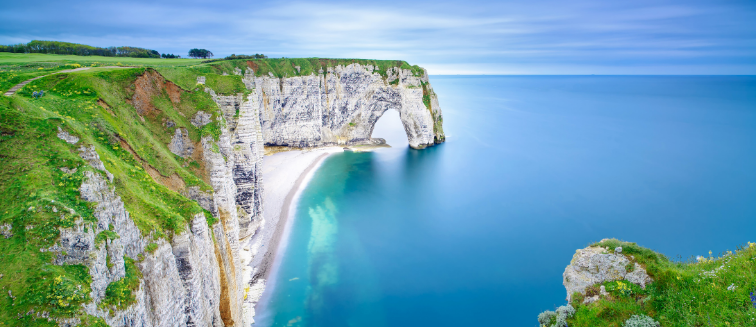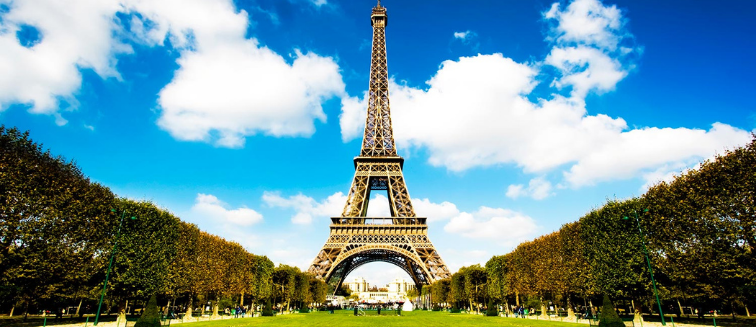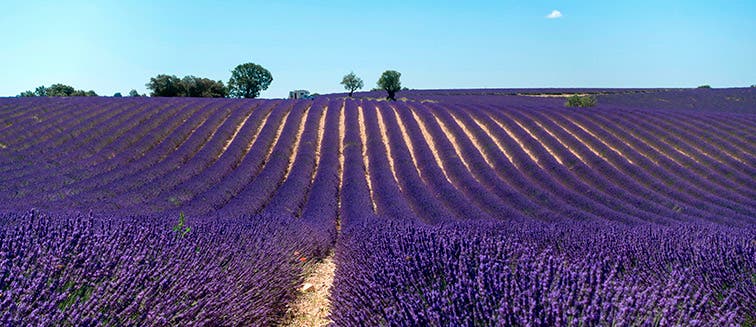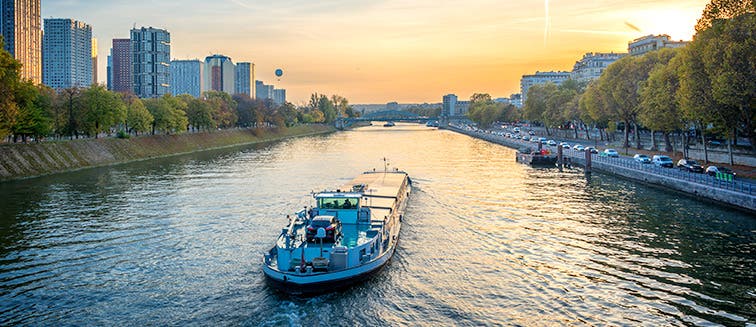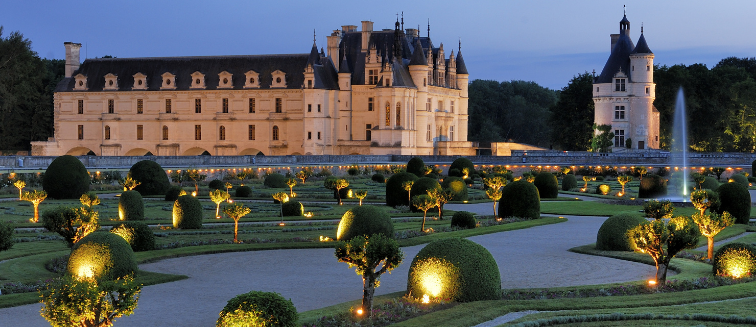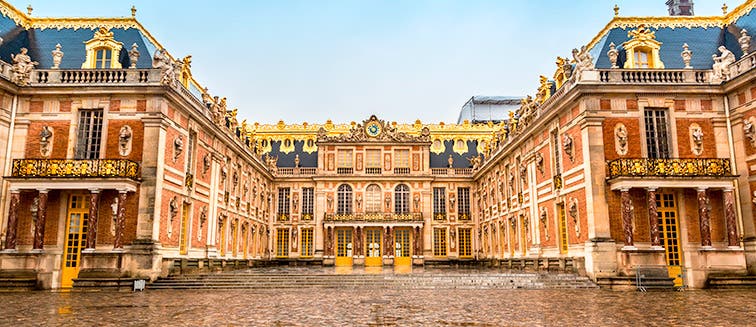France holds a mythical quality for many travelers, a romance, a feeling, a style or, as they say in France, a ‘je ne sais quio’. Something you can’t pin down but yearn to experience nonetheless. Situated in Northern Europe, travel to France is eternally popular with foodies, romantics, and fashionistas. From Paris’s Eiffel Tower and Champs Elysse to the vineyards and chateaux of Bordeaux, the historic beaches of Normandy and the eternally glamorous promenades of the French Riviera, a tour of France is as diverse as it is fascinating. Culture exudes from every pore of France’s monuments, castles, and grandiose palaces.
Think Carcassonne, Versaille, and Mont Saint-Michel to name only a few. Nothing is more quintessentially French than a freshly baked breakfast croissant, fine wine, and indulgent patisserie, so be sure to come with a healthy appetite as well as a generously sized suitcase for shopping! Even in the depths of France’s forested countryside, you can still experience the luxury that is expected from a trip to France. Sip champagne in an ancient chateau or fall in love with the snowy peaks of Chamonix in the French Alps. The capital, Paris, is, of course, a bucket-list favorite for all travelers and is one of the world’s top tourist destinations. Home to the 4th largest number of UNESCO sites in the world, France’s familiar culture and diverse sights make it one of the world’s most enduring travel favorites.
History of France
France’s rich history is a large part of its appeal as a travel destination. Humans have inhabited the territory of modern-day France for millennia, with scattered farming communities emerging around 6000 BC. One of France’s most famous eras was that of the Gauls, a Celtic peoples who inhabited the region during the Iron Age. Known for their craftsmen, druids, and warriors, Gaul, as the territory became known, was conquered by Julius Ceasar of Rome in 51 BC and it remained part of the Roman Empire for over 500 years until Germanic Franks formed the Kingdom of Francia.
The famous French ruler, King Charlemagne united much of Western Europe during this era. Later, the French language emerged under the rule of King Francien, around the year 1000, and, not long after, the Vikings of Scandinavia arrived on France’s northern coast. These settlers were granted land by the king and became known as the Normans, building communities in the modern-day region of Normandy. Famously, the Normans conquered England in 1066, led by William the Conqueror.
The Kingdom of France emerged as a major power in Europe following its success in the grueling Hundred Years’ War. Following the Europe-wide Renaissance from the 14th-century onwards, French culture and influence flourished. In the late 18th-century, Louis XIV was famously overthrown, along with the entire monarchy and much of the aristocracy in the French Revolution. The Declaration of the Rights of Man and the Citizen, the basis of the revolution, is still the foundation of the French republic today. In the 20th-century, World War I and II had a major impact on France. On a trip to France today you can visit the poignant graves of the fallen war heroes in Normandy.
Nature in France
If you can drag yourself away from the cultural delights you’ll discover that France is home to a smorgasbord of natural wonders and untouched landscapes. Its climate fosters distinct seasons, especially glorious springs and summers when the countryside truly comes to life. There are countless natural attractions for outdoor enthusiasts to explore on a holiday to France.
The magnificent Gorges du Verdon ranks highly on the list of France’s natural wonders. A 700 meter-high canyon in the south of the country, filled with bright blue water and teeming with swimmers, kayakers, and rock climbers in the summer. Interestingly, France is home to the highest sand dune in Europe, the Dune du Pilat, which sits on the shores of the Bay of Biscay in western France. Reaching 110 meters at its peak, the Dune du Pilat is a favorite for adrenalin junkies who can sand-board or paraglide on its dunes. For a more laid-back taste of France’s natural beauty, you cannot beat the Lavender Fields of Provence.
The quintessential aroma of southern France comes from these seemingly endless rows of fragrant purple flowers. Yes, they look beautiful, but the smell is simply heavenly. Other beautiful sights to visit on a trip to France include the winter-sports haven of Mont Blanc in the French Alps and the breathtaking Etretat Cliffs of Normandy, famously immortalized in the paintings of Monet. These chalk cliffs are known for their unique rock formations, with amazing arches that frame the sea views.
Culture in France
Around the world, French culture is admired, replicated, and loved. Wine, cheese, fashion, sophisticated dining, and famous schools of philosophical thought are just some of the most well-known exports of French culture. This is without mentioning France’s fabulous architecture; there are fine examples of Gothic, Baroque, and Neoclassical architecture throughout France. Think Notre Dame, the Palace of Versaille, and the Arc de Triomphe to name only a few. On the whole, France is a proud nation; the motto of liberté, égalité, fraternité still strikes a chord with many French people and underly the values of the nation. Food and wine are central parts of social life in France and indulging in these are considered an obligatory part of getting to know French culture. Art is another important part of the national culture, and historically, France has been the birthplace of many renowned artists. Its numerous museums, such as the famous Louvre, are an unmissable attraction on a tour of France.
Travel to France to experience the grandeur of its romantic cities, the aromas of its lavender-filled countryside, and the glamour of its celeb-ridden coastal resorts. An element of luxury, a touch of style, and heaps of mouth-watering food and wine ensure a trip to France lives up to all expectations.

